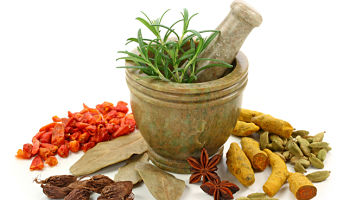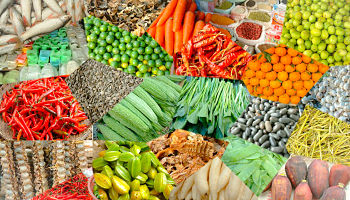VIETNAMESE SPICES
Ever since bare feet came to claim the virgin soil Viet Nam, pepper and chilli have been the subjects of poems: “Goby cooked with pepper, the head remaining, some chilli, some onion, some meat added to make a meal for my love.”
Countless dishes have been made from pepper, onion, garlic, chilli, and other spices. that help the digestion and cure diseases. Fish sauce is one example. From basic fish sauce, many different varieties have been made, such as fish sauce with chilli, vinegar, garlic, lemon, ginger, tamarind, lemon-grass, and many more combinations that are all carefully prepared.
Vietnamese food is fundamentally based on different flavour combinations. Ancient Vietnamese people were very experienced in food selection and mixture. One example of a creative flavour mixture is coconut and Con Duong, a kind of worm that lives in certain trees. The coconut is preserved in fish sauce and then grilled with vegetables. Duong dung Dinh is a porridge made of dry coconut and Con Duong. Con Duong from date trees is steamed with rice.
 |
 |
Spices are what make many dishes unique, including fried crab with lemon pepper salt, cricket with fried coconut, pepper fried crabs, and fried Ca Deo fish with lemon-grass and chilli. It is the hot flavour of ginger that makes fried catfish so delicious and many common dishes ate boring without a spicy green pepper or chilli that brings tears to one’s eyes. The light fragrance of onion and the strong flavour of garlic mixed with vegetables is an excellent combination of natural essences.
Popular Vietnamese dishes are the result of trial and error and creative adaptations to the environment and the weather. For this reason, each region of the country has its own unique food culture.
In northern Viet Nam, chicken is often served with lemon leaves, snails are steamed with ginger leaves, and boiled meat is served with fish sauce. Meanwhile, in southern Viet Nam, boiled chicken is cooked with fragrant knotweed, snails are steamed with lemon-grass and boiled meat is served with small fish or shrimp sauce.
The philosophy of balance is central to the lives of Vietnamese people, and their food culture is no exception. To create this yang-yin balance in food, it is divided into five categories: cold, hot, moderate, warm, and cool. Ginger and pepper (yang) are served with cold, or; “yin” food; chill (yang) is served with seafood (yin); fragrant knotweed (yang) is served with boiled duck eggs (yin); watermelon (yin) is served with salt (yang). Vietnamese fish sauce is usually mixed with other ingredients so that the dipping sauce is a combination of the five flavours: salty, bitter, sour, hot, and sweet. This principle of balance is the reason why ginger soup with perilla (yang) should be eaten to treat a cold (yin), and onion soup (yin) should be eaten to treat sunstroke (yang).
It would be impossible to discuss all the different Vietnamese dishes or flavour combinations – there are too many. In the countryside, such dishes as fried snakehead with tamarind, clay grilled duck with ginger fish sauce, a fried mouse with lemon pepper salt, and chicken with chilli salt are very popular.
A number of writers have described their favourite dishes. Vu Bang mentioned filed mouse with the Mo Om vegetable and fried mouse with lemon-grass fish sauce, raw vegetables, and green mango. Son Nam always eats Ca Keo fish with cucumber, and for him, tilapia must be mixed with garlic, pepper, and grilled onion before it is cooked with brine. He also says that he can only enjoy mussel rice when it is so spicy that he is wiping the tears from his eyes as he eats it. Tri Vinh will not eat bin without a green chilli. Vermicelli and sour crab soup and Pho Bo (beef soup) ate mixtures of many dark and light colours such as green, yellow, and red. Chili, pepper, perilla, and a variety of vegetables all combine to make the perfect sweet, steaming hot, spicy dish.
All kinds of food should be made to perfection when people share a meal, sweating and crying from the spices, they are sharing true companionship. Long periods without these traditional and well-loved dishes make a person long for dishes cooked with fish sauce, goby cooked in brine with pepper, morning glory soup, egg-plant pickled in soy sauce, and the list could go on and on.